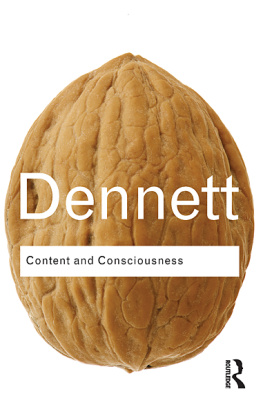First published 1981 by Kegan Paul International Ltd
2 Park Square, Milton Park, Abingdon, Oxfordshire 0X14 4RN
52 Vanderbilt Avenue, New York, NY 10017
Routledge is an imprint of the Taylor & Francis Group, an informa business
First issued in paperback 2019
Copyright African Studies Centre, Leiden, 1981
All rights reserved. No part of this book may be reprinted or reproduced or utilised in any form or by any electronic, mechanical, or other means, now known or hereafter invented, including photocopying and recording, or in any information storage or retrieval system, without permission in writing from the publishers.
Notice:
Product or corporate names may be trademarks or registered trademarks, and are used only for identification and explanation without intent to infringe.
Set in Press Roman by Hope Services
British Library Cataloguing in Publication Data
February, Vemie A
Mind your colour: (Afrika - Studiecentrum.
Monographs)
1. South African Literature - History and criticism
2. Coloured persons in literature I. Title II. Series
820'9 PR9354.2.A8 80-41620
ISBN 13: 978-0-7103-0002-7 (hbk)
ISBN 13: 978-1-138-88388-8 (Pbk)
This book is essentially about stereotypes as found in the literature and culture of South Africa. It deals specifically with those people referred to in the South African racial legislation as coloureds. The book is also an illustration of the way in which stereotypes function as a means of social control and repression. One of the direct consequences of colonialism and racism is that the colonized or the discriminated invariably become the dupe of a series of rationalizations whereby the power-holders (i.e., the whites) justify their dominant position in society. Balandier, the French scholar, has given ample demonstration of this phenomenon as it operated in the former French colonies in West Africa and the Antilles. Here, the major channels of imposing French values were the French administrative officials and expatriates in the colonies, the school system and the policy of assimilation. Such a policy led to a reverence for the metropolis, Paris, an over-evaluation of French customs and norms, and a rejection of their own culture. This illusion was soon dispelled the moment the colonized set foot in France. Most blacks discovered that they were still looked upon as le negre, even by the lowest of Frenchmen.
The Dutch economic historian, D. van Arkel, has, on the basis of his work on the Austrian Jews, come to the conclusion that stereotypes arise when the following conditions are fulfilled: (1) there must be stigmatization, (2) social distance and (3) terrorization. The black man, then, becomes lazy, over-sexual, a neer-do-well, an ignoramus, fit only to provide the comic note in novels and short stories. Not surprisingly, these stereotypes prompted Ezekiel Mphahlele to rail against Joyce Carys Mister Johnson: flung away Mister Johnson with exasperation ... I had seen too many journalistic caricatures of black people and bongo-bongo cartoons showing Africans with filed teeth and bones stuck in their hair. vi
The stereotype facilitates the task of the power-holder and makes it possible to stipulate a code of conduct for the blacks on the basis of characteristics imputed to them by whites. This process is nowhere more apparent than in South Africa, where blacks are allowed upward social mobility only within the institutionalized and ascribed pattern. The major emphasis in this book is on those people labelled coloured within the South African racial hierarchy, and the way in which they are stereotyped in the literature and culture of that country. The term coloured is, in itself, in need of explanation. Since, however, this is extensively dealt with in the introductory chapter, it is sufficient to state here, that the term is largely inspired by racist thinking. It is, for this reason, that it is placed in inverted commas, to express my rejection of it as it is used in South Africa.
Sometimes, the term so-called coloured is used, and, of late, the general tendency is to refer to coloureds as blacks. This is very much a post-Soweto phenomenon. There is, however, no consistency in the usage of the term black.
The picture which emerges of the so-called coloured people within the South African historical and literary context, is an unpretty one. In fact, one has incontrovertible proof that Afrikaner political attitudes must have inevitably been shaped by some of these stereotypes. It is, therefore, not so surprising to find an Afrikaner cabinet minister, Dr E. Donges, quoting from the works of Sarah Gertrude Millin and Regina Neser (in casu, Kinders van Ishmael), in support of his proposed law to forbid sexual relations between white and black in 1948. Special attention is given to Coloured-Afrikaner relations in literature. One is confronted with a picture ranging from ambiguity and almost near- kinship to total rejection and hatred.
The stereotype of the coloured as found in literature, is contrasted with that of the Indo in the former Dutch East Indies (now Indonesia). References are made to the creolized situation in Surinam (former Dutch Guyana). This comparative treatment of the subject served to provide further illuminating insights into the whole process of stigmatization.
The literary and cultural scene reveals that stigmatization has helped in the process of dehumanization, the effects of which are clearly visible at times in the anomalous behaviour of the so-called coloured people. At the same time, it reveals that the process of black consciousness has forced many a coloured into an orphic descent. There seems, at last, in the words of the Guyanese novelist, Wilson Harris, a charting of the hollowness to set up a new echoing dimension of spatial resources for the liberation of community.
Sadly, however, my insight would have been severely restricted had it not, ironically, been for those years of exile in Holland. I was afforded an opportunity to abstract myself from the holocaust and develop, at the least, a comic ironic sense. Periods of teaching African, Afro- Caribbean and Afro-American literature at universities in Sierra Leone (Fourah Bay College), Surinam, Leiden, Amsterdam, Antwerp and Wisconsin-Madison further helped me to understand certain social processes.
In Amsterdam, I had occasion to come to grips with Cape society from time to time. I am grateful to Angus Leendertz and his father for anecdotal evenings spent in Amsterdam. I am thankful to my institute at Leiden, the Afrika Studiecentrum, and in particular, to Dr G. W. Grootenhuis, the general secretary, for his appreciation of my activities. The historian, Dr R. Ross, was always willing to lend an ear and share his research findings on South African historical issues with me. I would be failing in my duty if I did not mention Professor Jan Voorhoeve, who supervised my research, and who allowed me to share his insights into Surinamese culture and literature and which finally culminated in Creole Drum. Above all, I owe my insights to my late mother, who taught us to remain sane in a race-orientated society and whose wisdom passed all understanding. Hopefully, this work will contribute to the process of undoing the self-deception in self-definition among the so-called coloured people of South Africa.







